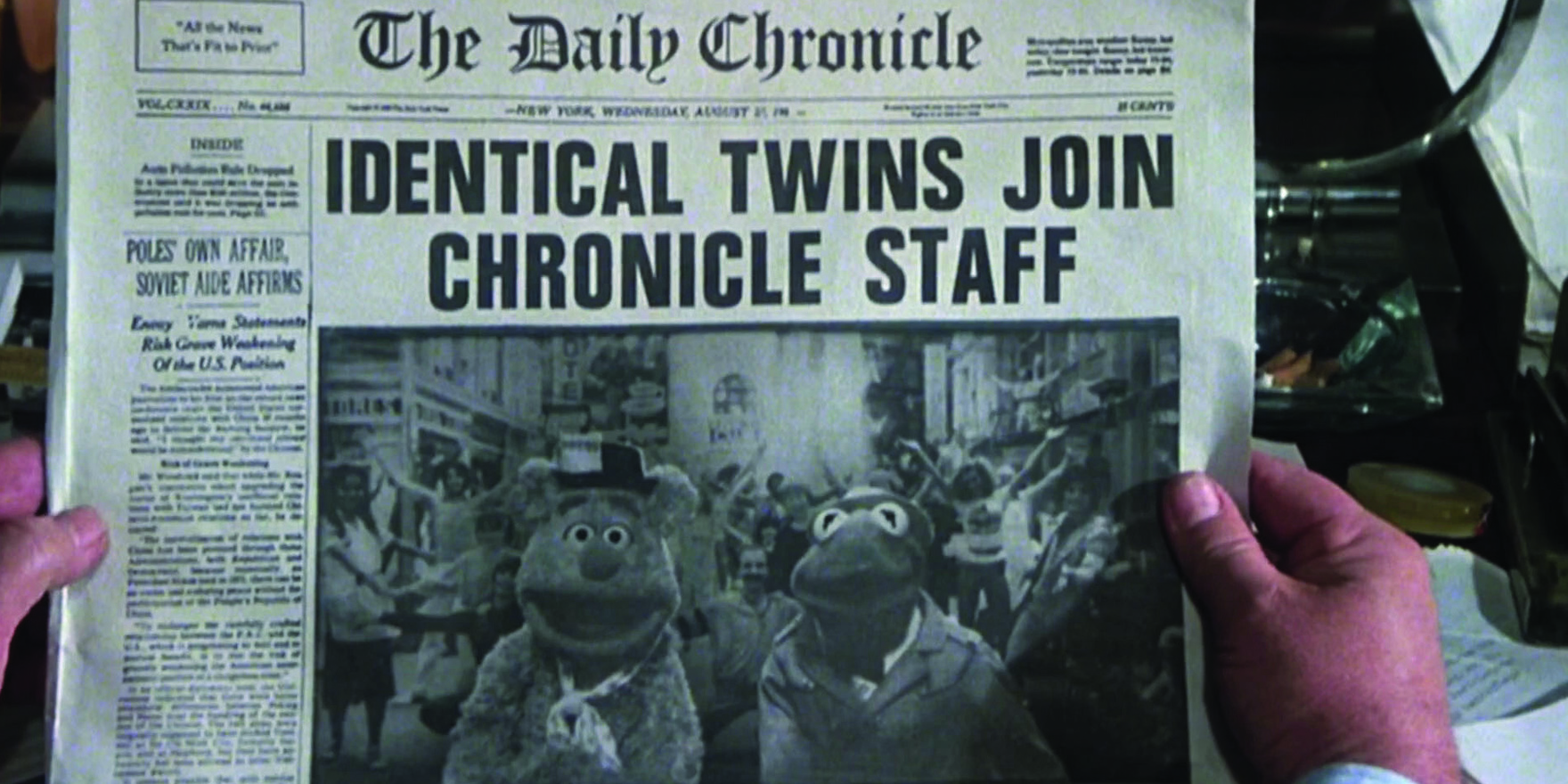If you take away cost but retain the convenience and quality, doctors would still rather do their reading in print
If The Sydney Morning Herald hadn’t slashed its journalistic workforce, if it had maintained its quality, and decided to make the paper free, what would have happened to its print readership?
New research in the medical media market suggests that it may well have stayed wholly stable. But who believes that?
The Medical Publishers Association of Australia (MPAA), which is the governing body of the media groups that focus almost exclusively on media for doctors, has conducted syndicated readership research on print in this market for the last 37 years.
This year, for the first time, the publishers agreed to research their digital assets in line with the same methodology they use for print, and the results point to doctors significantly preferring the print product to the digital offering for reading.
If you believe this research, then people in general, not just doctors, probably prefer to read print, from a utility perspective.
And if you don’t make them pay for it, make it convenient to access (like send it where they want to receive and read it) and don’t slash the quality of your content, well, you just might never lose them as engaged readers. Then all you have to worry about, as a publisher, is convincing your advertisers to keep backing the channel. But that can be hard in this day and age where your average “Generation Y” media buyer sleeps with their smartphone.
The MPAA research also found that the quite significant digital assets of all the publishers still did not compete with print if you wanted to reach the most doctors in the most engaged manner.
Print was received by more than 95% of the market (sent free by the publishers), and read, on average if you combined all the publications, by about 78% of that market. Digital, on the other hand, could only achieve a reach, to the same doctor cohort, of 65% via the publishers’ websites, and 57% by their email news services, over the period of a month.
In terms of engagement, print pretty much laid digital down. Average time reading a publication is about 18 minutes. Average time on site, for all the sites, is just over two minutes.
If you wanted to add digital to your print campaign as a marketer, the additional reach you achieved, product by product, was, for all intents, nothing. Which is pretty much what you might expect if your print is getting to 95% of your audience and still being read well.
Says Ashley Sparkes, head of Competitive Advantage Research, which has done the MPAA research for many years now, and does quite a bit of consumer research for big brands, “It’s a fascinating case study, in that the research is longitudinal over many years, robust, and shows no sign at all that print is being read less in this market, despite the significant growth of alternative digital assets”.
“The circumstances surrounding how print is regulated and used in this market mean it is, by a significant margin, the most-effective mass-marketing medium. Digital is still important tactically, but if you shifted all your money to digital, as we are starting to see in some consumer segments now, you’d be cutting yourself out of a lot of the market”, he said.
The first thing people usually say about this phenomenon is that doctors are just slow to take up digital. They’re all old, apparently.
It’s a pretty silly argument. Do we think doctors don’t use Facebook or Instagram, don’t bank or book their travel online, or do all the other stuff that the average consumer does digitally? Do we think doctors don’t research medicine online?
No, doctors are highly digitally engaged, professionally and as consumers. Professionally they are one of the most engaged groups on social media. Witness GPs Down Under and Social Media and Critical Care (SMACC). And this research says doctors, young and old, are reading print with not much variation in habit.
So much for all that hoo-haa about Gen Ys and print.
What is happening, it appears, is that this market has, for various reasons, been able to maintain its quality of journalism, its frequency, and its revenue in print. And as result, print has remained highly competitive to digital. In fact, it’s still the main platform for marketing for the big advertisers, outside the use of direct sales forces and medical education.
The unique conditions of the pharmaceutical market mean that this research does a lot to mimic a modestly robust scientific experiment. As a result of the market being small and the reader data well understood, and because of regulations around how you can advertise drugs, a lot of the noise you see in big consumer markets is filtered out.
For starters, advertising digitally, although cheaper, is, for regulatory reasons in this market, significantly more difficult to do and stay within the rules.
This has meant that the revenue in print hasn’t declined much. As a result, the publishers have been able to maintain a good product journalistically, keep distributing it to most of the market, and keep production values high.
This is perhaps one very distinct difference to other B2B markets, where print revenue has collapsed, not as a result of a print readership decline necessarily, but because digital channels have been a pervasive, effective and cheap alternative to print advertising.
The other thing going on is that the target market here is small and very well-defined. If you are trying to get to regularly prescribing GPs who work a lot, you only need to go to 18,000 to 20,000 readers.
Australia Post is doing its very best to send these publishers broke by upping the cost of postage by more than double the CPI each year, but the publishers all bear that cost, knowing that reach is so important.
So each week, all the GPs in Australia get their print titles delivered to their home or surgery for free.
The publications are all high quality. And, they are all still very well read.
The other factor, probably, is that social media, search-based digital advertising, and programmatic advertising, which are so powerful in consumer-market advertising, are largely not in play in pharmaceutical marketing to doctors.
Advertising prescription drugs to doctors is highly regulated. If something goes wrong, you can get yourself into very serious trouble. Social media and search are too unpredictable, fraud ridden and, in the end, risky for the pharmaceutical companies to use. So, it’s mainly only basic and trusted digital channels of web and email competing with the print channels. And the medical publishers own most of those digital channels.
The final important factor at play here is content. If you are a consumer magazine or newspaper, your competition is but a smartphone-tap away. You compete with everything.
In medicine, the content is very specialised. If you’re looking for convenient, accurate and quality content as a doctor, it’s there if you look online, but it’s simply not as convenient as ripping the plastic off your few publications a week.
Convenience is still high in this market because the print titles are delivering good summaries of clinical information and medical news and analysis.
In this market, print is strategic, and digital tactical. And because of advertising regulation, it is likely to stay that way for some time. As a result, the publishers have enough money to maintain their targeted circulations, and above all, their quality.
Like-for-like print readership hasn’t dropped much at all in the last 20 years. It did a few years back, but that was down to the publishers stuffing up their data, not the readers going elsewhere.
It’s a convenient set up for everyone. Advertisers get a highly effective engagement medium, still at pretty low cost, the publishers still make some money, and the doctors get to have great content for free. And although the doctors are suspicious of the publishers because a lot the advertising is from pharmaceutical companies, the publishers know that if they don’t try for great independent content, then readership will go down.
Ironically, as far as some doctors are concerned, the pharmaceutical companies are actually funding a good service for all of the doctors in the country. It’s a fine balance, but so far it remains a bit of a virtuous circle.
It’s interesting to ponder if this unusual ecosystem will ever break with its print habit, as almost all other professional markets have. It doesn’t seem likely in the near term because everyone is benefitting. The only group upsetting the ecosystem is an uncaring Australia Post which plunders the mail system for profit as much as it can get away with.
This is all academic, of course, for most modern consumer markets. In consumer marketing, the ability of social media, search and programmatic, in particular, to target would always mean that the money would fall away from print, and stress those businesses, no matter what they did.
Digital has lots of transparency and fraud issues, but in consumer, and in most B2B markets, it still has a highly effective return on investment. The lack of transparency and fraud just means that the old adage about advertising – I know 50% of it works, I just don’t know which 50% – still seems to apply in the digital-media world.
The phenomena being seen in the pharmaceutical marketing advertising ecosystem for print probably goes a little way to explaining why free to air TV has remained so much more resilient as an old media medium in consumer than print. It’s convenient, free, and the quality hasn’t declined that much.
But you don’t see that in newspapers or consumer magazines. As revenue has drifted, quality has been negatively affected. And the ubiquitous nature of digital channels has caused consumer print reading-time to be significantly challenged. As result revenue, quality, readership and reach have all dropped off and continue to keep falling.
So, people like quality things for free and they like convenience. Who’d have thought?



